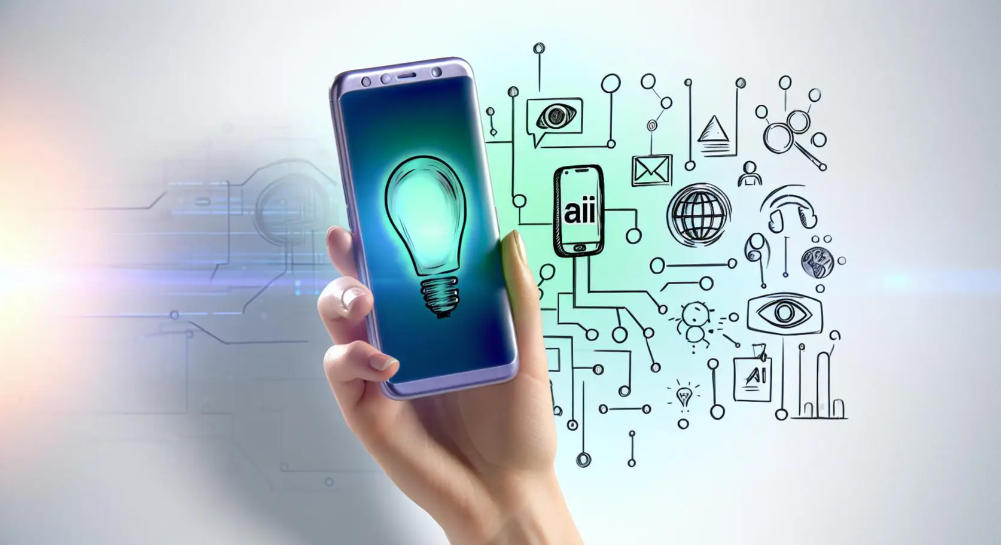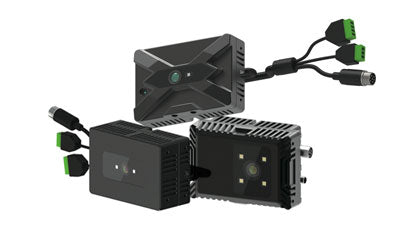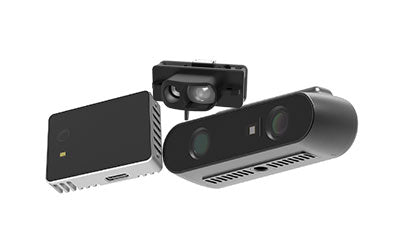ToF Sensors in HealthTech: Transforming Non-Contact Medical Monitoring

How Are ToF Sensors Transforming HealthTech and Non-Contact Medical Monitoring?
In today’s consumer electronics era, smartphones, wearable devices, and smart home IoT terminals are undergoing a technological revolution — from 'two-dimensional perception' to 'spatial perception.' The core driving force behind this transformation is the TOF (Time-of-Flight) sensor. With its high-precision depth sensing, real-time responsiveness, and low power consumption, ToF is redefining human-machine interaction, 3D imaging, AR/VR experiences, and intelligent home control.
This article explores how ToF sensors are elevating smartphones and IoT devices, from their applications to industry trends and emerging market opportunities.
What is a Natural Interaction?
Natural Interaction refers to a mode of communication and control between humans and devices that follows natural human behaviors. It allows users to interact with technology as naturally as they do with other people or physical objects — without requiring complicated learning or operations.
Simply put, machines understand human expressions in a natural way.
Key Features of Natural Interaction:
-
Intuitiveness
Users can interact through gestures, voice, gaze, or body movements without special training — for example, waving to skip a song or using voice to control lighting. -
Multimodal Interaction
Combines speech recognition, gesture detection, facial expression, touch, and eye tracking for more natural and flexible communication. -
Contactless & Immersive
Through ToF sensors, AI cameras, and infrared detection, users can control devices without physical contact — realizing true 'zero-touch' operation. -
Human-like Response
Systems understand context and emotion, responding naturally — such as AI assistants using conversational tones to reply.
1. The Demand for Interaction Upgrades in Smart Devices
As smartphones, smartwatches, and smart speakers proliferate, users increasingly expect natural, contactless, and intelligent interaction. Traditional input methods like touch, buttons, and basic voice recognition can no longer satisfy the need for immersive and precise experiences.
This is where ToF sensors play a transformative role. By measuring the time difference between emitted and reflected infrared light, ToF creates high-precision 3D depth maps that enable devices to 'perceive space.'
-
For smartphones, ToF enhances autofocus speed, improves portrait bokeh, and enables realistic AR modeling.
-
For wearables, it enables gesture tracking, posture detection, and spatial positioning.
-
For smart home IoT devices, it powers touchless interaction, motion detection, and intelligent automation.
This 'interaction upgrade' represents not just a hardware improvement, but a true leap in user experience.
2. ToF in Smartphones: From Imaging to Interaction
The introduction of ToF sensors has redefined what smartphones can do — from photography to user interaction and AR/VR applications. ToF enables devices to understand depth and space, transforming them into spatially aware tools that bridge the digital and physical worlds.
1. Laser Autofocus: Precision and Speed Combined
Traditional autofocus struggles in low light or complex backgrounds. ToF Laser Autofocus (AF), however, measures light travel time to instantly determine object distance.
Advantages:
-
Millisecond-level response, perfect for motion capture
-
Reliable focus even in low light
-
Smooth video tracking with no focus jumps
-
Seamless multi-camera focus coordination
This ensures crisp, stable shots for photography, vlogs, and real-time video.
2. 3D Portraits and Background Bokeh: Redefining Mobile Aesthetics
ToF depth data allows the camera to precisely map depth for true optical-level bokeh rather than simulated blur.
Benefits:
-
Natural edge detection for hair and clothing
-
Smooth depth transition from subject to background
-
Adjustable post-shot focus and blur intensity
-
Improved AR face mapping accuracy
With this, ToF elevates smartphone portrait photography to DSLR-like quality.
3. 3D Modeling and AR/VR: Blending Real and Virtual Worlds
ToF enables real-time 3D scanning and modeling, allowing users to create lifelike digital replicas for AR art, virtual fitting, indoor navigation, and home design visualization.
Key Enhancements:
-
Millimeter-level spatial accuracy for AR integration
-
Ultra-low latency for seamless tracking
-
Real-time 3D reconstruction and gesture recognition
-
Heightened VR immersion and realism
Both Apple’s LiDAR scanner and Android’s ToF modules are advancing the future of spatial computing.
4. Gesture Recognition and Contactless Control: Toward Smart Interaction
As contactless control becomes mainstream, ToF allows smartphones to detect hand gestures and movements in 3D space — enabling 'air gestures' without touching the screen.
Examples include:
-
Waving to play/pause media
-
Making a 'V' sign to trigger a selfie
-
Scrolling or flipping pages in midair
-
Motion-based game controls
-
Auto wake-up or volume adjustment when detecting proximity
In a post-pandemic world, contactless interaction aligns with both safety and convenience — with significant potential in healthcare, public spaces, and industrial automation.
5. Evolution and Flagship Adoption
Top brands such as Samsung, Huawei, OPPO, Vivo, and Xiaomi have integrated ToF modules into their flagship lines. Applications now extend beyond photography to 3D facial recognition, AR gaming, spatial control, and security authentication.
Future Development Trends:
-
Higher-resolution depth sensing (VGA/HD)
-
Multi-camera depth fusion
-
Low-power dToF for better battery efficiency
-
AI-driven depth fusion algorithms
As costs drop and integration improves, ToF will likely become a standard sensing component across mid-range devices — turning smartphones into spatially aware intelligent terminals.
3. ToF in IoT Devices: The Key to Spatial Intelligence
In smart homes and IoT systems, ToF is becoming a cornerstone technology. Unlike traditional infrared or ultrasonic sensors that detect only presence, ToF understands spatial relationships — measuring distance, shape, motion, and position in real time.
With ToF, devices evolve from passive responders to active perceivers, marking the transition from connected systems to spatially aware ecosystems.
1. Smart Locks and Security Systems: From Recognition to Defense
Security depends on accurate recognition. Traditional 2D cameras struggle with lighting and reflection issues, but ToF depth sensing delivers consistent accuracy under all conditions.
Key Applications:
-
3D facial recognition with liveness detection to prevent spoofing
-
Precise distance sensing to trigger access only when users are close
-
Intrusion detection through motion size and trajectory analysis
-
Night vision capability with reliable 3D data in total darkness
This upgrades smart locks, cameras, and doorbells from simple recognition systems to spatially intelligent sentinels.
2. Unmanned Retail and Smart Payments: Driving the Next-Gen Commerce
As unmanned stores and self-service kiosks expand, ToF’s real-time 3D measurement makes it possible for systems to understand the spatial relationship between people and products.
Core Applications:
-
Customer behavior analysis — detecting posture, gestures, and dwell time
-
Product dimension recognition — monitoring item movement and placement
-
Automated checkout and theft prevention via 3D motion tracking
-
3D heat mapping for store layout optimization
Compared with traditional cameras, ToF offers higher precision, lower latency, and stronger privacy protection, making it ideal for next-generation retail intelligence.
3. Human-Machine Interface (HMI): Creating Natural Contactless Interactions
In the field of smart home appliances and human-machine interfaces (HMI), ToF technology has become the key to enabling true spatial interaction. Traditional control methods — buttons, voice commands, or touch panels — are being replaced by gesture recognition and motion-based control.
Innovative ToF-powered interactions include:
-
Air gesture recognition: Change TV channels, adjust volume, or switch air-conditioning modes with a simple wave of the hand.
-
Spatial positioning control: Users can navigate menus or move virtual objects within a 3D space using hand gestures.
-
Multi-user detection: ToF sensors can distinguish users by their position and distance, enabling personalized responses.
-
AI-augmented visual recognition: Detects complex gestures such as rotation, pinching, or tapping motions.
In the future, smart TVs, kitchen appliances, car dashboards, and smart speakers will rely on ToF to build contactless HMIs, making control more natural, safe, and futuristic.
4. Smart Lighting and Spatial Detection: Devices That 'Understand You'
ToF technology not only transforms interaction but also plays a critical role in environmental awareness and energy optimization. By accurately detecting the number of people, their distance, and movement patterns in a room, smart systems can dynamically adjust lighting, air conditioning, and energy use for comfort and efficiency.
Typical applications include:
-
Smart lighting systems: Automatically turn lights on when someone enters a room and adjust brightness based on distance or motion.
-
Adaptive air-conditioning: Direct airflow and temperature according to user position and activity.
-
Energy management systems: Monitor room usage via ToF to enable intelligent power saving.
-
Smart offices and conference rooms: Detect occupancy and adjust lighting and HVAC systems in real time.
This spatial-level responsiveness is driving smart homes from command execution to proactive perception and prediction, making living spaces truly 'aware and intelligent.'
5. ToF in the IoT Ecosystem: Value and Future Trends
With the rise of AIoT (Artificial Intelligence + IoT), ToF is becoming the crucial perception gateway for connected devices. From smart locks and speakers to robots, retail systems, and intelligent buildings, ToF is endowing devices with spatial intelligence — the ability to sense, interpret, and interact with their environment.
Key future trends include:
-
Lower costs and modular integration: Localization of ToF chip production is reducing prices and enabling easy integration for smaller manufacturers.
-
Sensor fusion with AI: Combining ToF with RGB, infrared, and IMU data for enhanced spatial awareness.
-
Low-power dToF adoption: Extending battery life for wearables and low-power IoT devices.
-
Privacy and data protection: Non-imaging depth data helps protect user privacy, aligning with smart home security standards.
From smart security to spatial interaction, and from unmanned retail to intelligent building management, ToF is becoming the key enabler that gives IoT devices the power to 'understand space and perceive humans.'
In the near future, ToF will no longer be just a sensor — it will be a bridge between the physical and digital worlds, allowing every smart device to truly see and understand its surroundings.
6. Technical and Commercial Challenges: Cost, Integration, and Privacy
Despite its promising potential, ToF adoption in consumer electronics still faces several challenges:
-
Cost pressure: ToF modules remain more expensive than traditional sensors, limiting mid- and low-end device integration.
-
System integration complexity: ToF must be tightly optimized with camera systems, AI algorithms, and ISP chips.
-
Power consumption and heat dissipation: Balancing performance and efficiency in compact devices remains a challenge.
-
Privacy and data security: Depth data is considered sensitive biometric information and must be encrypted and stored securely.
Addressing these challenges will determine how widely ToF technology can be adopted in the consumer electronics market.
7. Recommendations for OEM/ODM Manufacturers
-
Scenario-based product design
Choose appropriate ToF specifications (e.g., VGA/QVGA resolution, detection range) for different applications like smartphones, wearables, or smart home devices. -
Hardware-software synergy
Combine AI algorithms and ISP optimization to process depth data efficiently, enhancing accuracy and response time. -
Low-power and modular design
Use energy-efficient VCSEL emitters and high-sensitivity SPAD receivers to improve endurance and reduce heat. -
Build an open ecosystem
Collaborate with chipmakers, algorithm developers, and IoT platforms to form a robust ToF ecosystem and accelerate real-world deployment.
8. Outlook: From 2D to 3D – The Age of Spatial Perception
In the next five years, ToF sensors will become a standard feature in consumer electronics. As costs decline and algorithms mature, combined with 5G and AIoT integration, devices will evolve from 2D recognition to spatial-level intelligent perception:
-
Smartphones will enable more natural 3D interactions and virtual imaging.
-
Wearables will achieve full-body motion tracking and health monitoring.
-
Smart homes will gain contextual awareness and adaptive automation.
-
The IoT ecosystem will shift from connected to perceptive, from passive response to proactive intelligence.
ToF technology is becoming the spatial eye of smart devices, marking the dawn of a new era — one that moves from flat visual information to true 3D spatial understanding.
Synexens 3D Camera Of ToF Sensor Soild-State Lidar_CS20
After-sales Support:
Our professional technical team specializing in 3D camera ranging is ready to assist you at any time. Whether you encounter any issues with your TOF camera after purchase or need clarification on TOF technology, feel free to contact us anytime. We are committed to providing high-quality technical after-sales service and user experience, ensuring your peace of mind in both shopping and using our products






